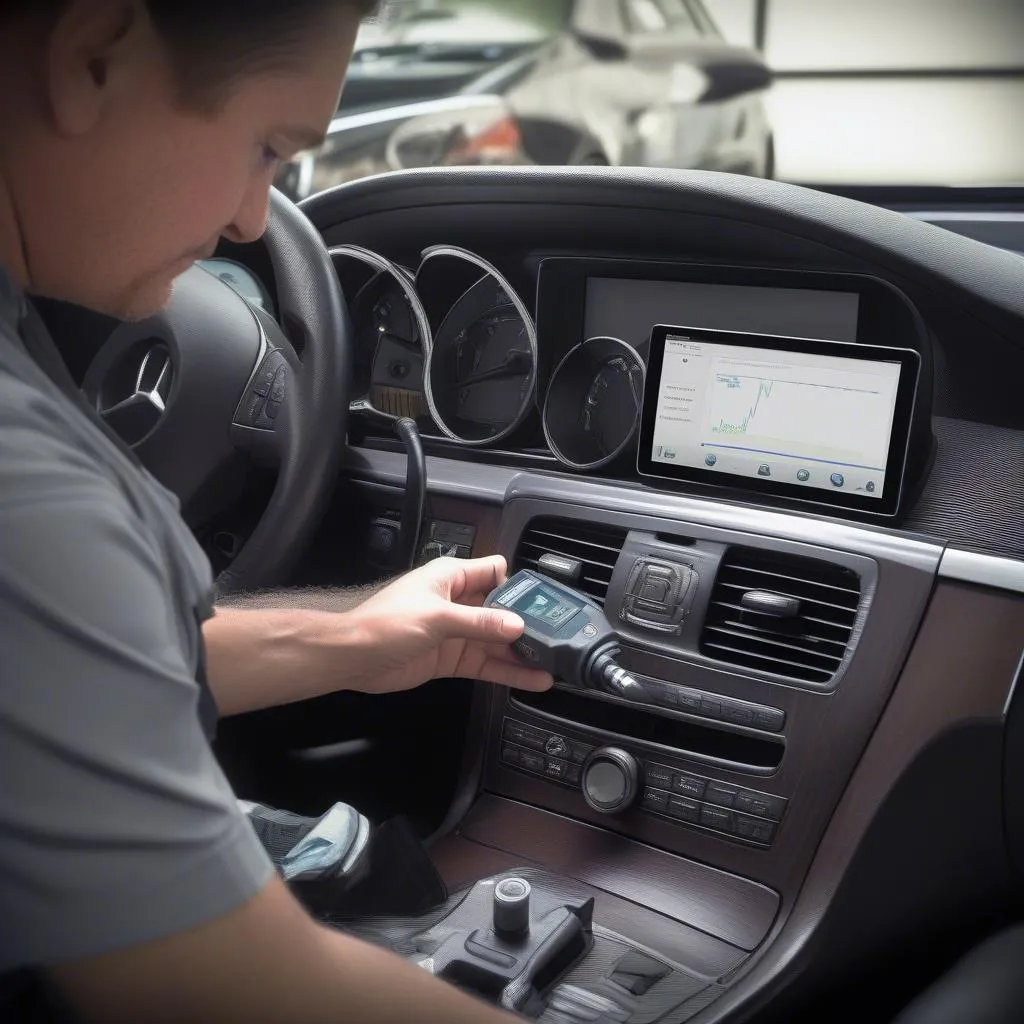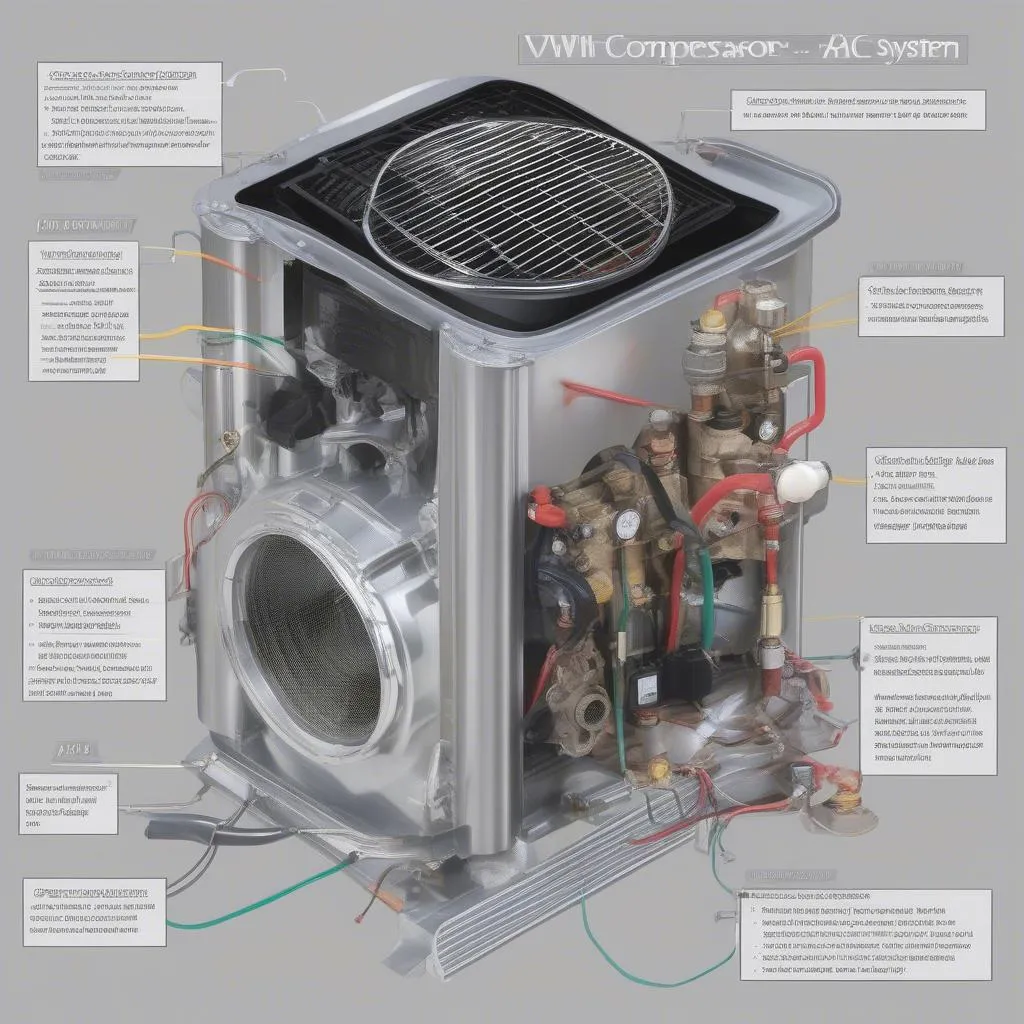Experiencing a sluggish response from your 2013 Mercedes C250’s turbocharger? That lag, my friend, can be a real drag on your driving experience. But don’t worry, you’re not alone. Turbo lag is a common issue in turbocharged vehicles, and the good news is, it can often be fixed. This guide is here to walk you through the common culprits of turbo lag in a 2013 Mercedes C250 and how to address them.
Understanding the Why: Causes of Turbo Lag
Before we dive into solutions, let’s understand why that turbo lag is happening in the first place. In a nutshell, turbochargers use exhaust gases to spin a turbine, which in turn forces more air into the engine, boosting power. Turbo lag is that annoying delay between you hitting the accelerator and the turbocharger spooling up to full speed. Here’s what could be causing it in your C250:
- Boost Leak: Think of it like a leaky hose – if there’s a leak in the system that carries air from the turbocharger to your engine, you lose boost pressure, resulting in lag.
- Faulty Wastegate or Actuator: The wastegate regulates boost pressure by controlling exhaust flow. If it’s stuck open, closed, or the actuator malfunctioning, it can lead to lag.
- Dirty or Faulty Mass Air Flow (MAF) Sensor: The MAF sensor measures the amount of air entering the engine. If it’s dirty or faulty, it can send incorrect data to the engine control unit (ECU), messing with the air-fuel mixture and causing lag.
- Restricted Air Intake: Any blockage or restriction in the air intake system (think dirty air filter) can choke the engine and contribute to turbo lag.
Spotting the Signs: Identifying Turbo Lag
While a delayed throttle response is a telltale sign, here are some other symptoms that might indicate turbo lag in your 2013 C250:
- Sluggish Acceleration: Your car feels slow to respond when you hit the gas, especially at lower RPMs.
- Whining Noise: An unusual, high-pitched whining sound from the engine, particularly during acceleration, could indicate a boost leak or a problem with the turbocharger itself.
- Check Engine Light: The dreaded check engine light can illuminate for various reasons, including turbocharger-related issues.
Gear Up: Tools for the Job
Before you roll up your sleeves, gather these tools that might come in handy:
- OBD-II Scanner: A must-have for reading and diagnosing engine codes. Consider Cardiagtech’s range of advanced OBD-II scanners for comprehensive diagnostics.
- Socket Set: For removing and tightening bolts and clamps.
- Screwdrivers: Various sizes for different components.
- Pliers: For hose clamps and other tricky-to-reach fasteners.
- Boost Leak Tester: If you suspect a boost leak (and the symptoms point that way), a boost leak tester will be your best friend.
Troubleshooting Time: How to Fix Turbo Lag
1. Check for Boost Leaks: Inspect all the hoses and connections in the intake system for any signs of cracks, looseness, or damage. A boost leak tester can help pinpoint leaks.
2. Inspect the Wastegate and Actuator: Check the actuator arm for smooth movement. It should move freely when vacuum or boost pressure is applied. If it’s stuck or sluggish, the wastegate or actuator might need attention.
3. Clean or Replace the MAF Sensor: Locate the MAF sensor in the air intake tube and carefully clean it using MAF sensor cleaner. If cleaning doesn’t resolve the issue, replacement might be necessary.
4. Inspect the Air Intake System: Ensure the air filter is clean and there are no obstructions in the air intake path. Replace the air filter if needed.
 Mercedes C250 Engine Bay
Mercedes C250 Engine Bay
5. Advanced Diagnostics: If the issue persists, more in-depth diagnostics might be required. Using a professional-grade OBD-II scanner like those offered by Cardiagtech can help pinpoint the root cause.
 Using an OBD2 Scanner
Using an OBD2 Scanner
Frequently Asked Questions
Q: Can a software update fix turbo lag?
A: While uncommon for a 2013 model, software updates related to the engine control unit (ECU) can sometimes improve throttle response. It’s worth checking with your Mercedes-Benz dealer for any available updates.
Q: Is it safe to drive with turbo lag?
A: Mild turbo lag might not be a safety hazard, but it can be annoying and affect performance. However, if you experience sudden loss of power, unusual noises, or other severe symptoms, it’s best to get your car checked by a mechanic immediately.
Q: Can I install a bigger turbocharger to eliminate lag?
A: While a larger turbocharger might reduce lag, it’s a significant modification that can affect other aspects of your engine’s performance and longevity. It’s crucial to consult with a qualified mechanic before considering such an upgrade.
A Final Word
Remember, proper diagnosis is key. While this guide provides general troubleshooting steps, it’s always recommended to consult with a qualified mechanic, especially for complex issues. Using the right tools, like CARDIAGTECH’s diagnostic equipment, can significantly aid in identifying and resolving turbo lag in your 2013 Mercedes C250.


